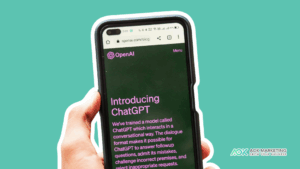Search Engine Optimization (SEO) is a complex and ever-changing field. One of the more subtle yet powerful aspects of SEO is the proper use of internal linking. Internal links are the highways of your website, allowing visitors and search engines to navigate through your content. When done correctly, internal linking can significantly improve a site’s SEO rankings. Unfortunately, internal linking is often overlooked or mismanaged, which can harm your website’s performance. In this comprehensive guide, we’ll discuss 11 common internal linking errors and provide practical solutions to enhance your internal linking strategy.
1. Overlooking the Importance of Anchor Text
The anchor text of an internal link is the clickable text portion that users see. One common mistake is using vague or non-descriptive anchor texts like “click here” or “read more.” These provide little value to search engines and users who rely on descriptive cues to understand the context of the link.
Effective Fix: Use descriptive and relevant anchor text that includes pertinent keywords for the linked page. This not only helps search engines understand the content but also entices users by showing them what to expect on the linked page.
2. Ignoring Link Relevance
Linking to pages without considering their relevance to the content at hand can confuse readers and search engines. Always ensure that the internal link adds value to the current content and enhances the reader’s experience.
Effective Fix: Be strategic with your links. Choose to link to content that is thematically related and provides further exploration into the topic being discussed on the current page.
3. Forgetting to Audit and Update Old Content
As time goes on, a website’s content may become outdated, or page URLs may change, resulting in broken internal links. Failing to check old posts for link accuracy hurts your SEO and leads to poor user experience.
Effective Fix: Regularly schedule content audits to review, remove, or update outdated internal links. Tools like Google Search Console can help identify and fix broken links across your website.
4. Creating Link Rings or Cycles
When several pages only link to each other in a closed loop, it creates a link ring or cycle, which can trap link equity and prevent the distribution of authority around your website.
Effective Fix: Ensure your link structure is like a web, with multiple paths leading to and from each page, opening up clear routes for both users and search engines.
5. Using Only Exact Match Keywords for Anchor Text
Relying exclusively on exact match keywords can appear manipulative to search engines and may trigger penalties for over-optimization.
Effective Fix: Employ a natural and varied approach to anchor text. Using long-tail keywords, synonyms, and branded terms can diversify your internal links and appear more natural.
6. Underutilizing Content Silos
Underdeveloped content silos can hurt your SEO by not fully supporting topic clusters with strategic internal linking, resulting in missed opportunities to showcase content relevance.
Effective Fix: Build out content silos that tightly group related pages through smart internal linking. This increases topical strength and makes it easier for search engines to identify your areas of expertise.
7. Neglecting User Experience
Creating too many internal links on a single page can overwhelm users and dilute link value. It’s important to balance the number of links per page to maintain a positive user experience.
Effective Fix: Strategically place a moderate number of internal links in your content where they feel natural and improve user engagement. Keep the focus on providing value rather than hitting a specific number of links.
8. Missing Opportunities to Link to High-value Pages
Some pages on your website will naturally hold more value, such as those that convert visitors or provide cornerstone content. Failing to link to these high-value pages may limit their visibility and ranking potential.
Effective Fix: Identify your most valuable pages and make sure they are featured prominently within your internal link structure. Use internal links to guide visitors towards these pages in a contextually relevant way.
9. Overusing Links on Non-relevant Pages
Linking to unrelated pages just for the sake of adding links can hurt the relevance and trustworthiness of both the source and target pages.
Effective Fix: Only add internal links when they make sense contextually. Every link should serve a purpose for the user, either to define a concept further or provide additional related information.
10. Disregarding the Power of Navigation Links
Navigation links are prime real estate for internal linking but are often not optimized for search engine crawling. Ignoring them may result in squandered SEO opportunities.
Effective Fix: Design your site’s navigation with SEO in mind. Include links to important pages and use descriptive anchor texts that align with your visitors’ search intentions and your SEO targets.
11. Neglecting Links on the Homepage
The homepage typically has the highest authority, and not leveraging this for internal linking is a missed opportunity. Ensure your homepage includes links to key pages and sections.
Effective Fix: Regularly review your homepage content and links to ensure they are current, relevant, and supportive of your internal link strategy. The home page is an ideal spot to highlight new or important content through internal links.
Conclusion
In conclusion, avoiding these 11 internal linking errors is critical for boosting your SEO and providing a better user experience. By crafting descriptive anchor texts, ensuring link relevance, regularly updating old content, avoiding link cycles, varying anchor text keywords, utilizing content silos, considering user experience, linking to high-value pages, using links contextually, optimizing navigation links, and leveraging homepage authority, you can significantly improve your website’s internal link structure. Fixing these common pitfalls is an investment in your website’s longevity and will pay dividends in the form of improved search rankings and visitor engagement. Remember that SEO is a marathon, not a sprint, and the diligent maintenance of your internal linking strategy is essential for SEO success.
Now that you’re armed with knowledge and solutions against prevalent internal linking errors, it’s time to comb through your site and make the necessary adjustments. Internal linking is more than just an SEO tactic; it’s an integral part of providing value and structure to your website. With the right fixes, you can transform your site’s internal linkage into a web of opportunities, driving traffic and enabling your content to shine.
About The Author
Marketing Team
The AOK Marketing Team is a diverse group of amazing individuals driven to help all of our clients succeed. Great people are everywhere, and we believe that people should control their workday, their work environment, and where they live. We have team members in 9 countries: United States, Canada, Egypt, Belgium, Ireland, Australia, India, Pakistan, and Hong Kong.
How can we help you?






